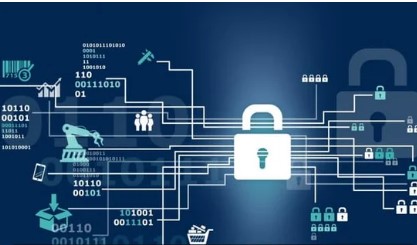How Cyber Security Embedded Systems Protect Critical Infrastructure

Imagine you’re tasked with securing a fortress. The walls are high, the gates are strong, but what if the enemy is already inside? That’s where embedded systems come into play in the realm of cyber security. These systems serve as the hidden defenders within the walls of our critical infrastructure, ensuring everything runs smoothly and securely. Today, we’ll explore how cyber security embedded systems protect critical infrastructure in an easy-to-understand way.
Introduction to Embedded Systems and Their Role in Critical Infrastructure
Embedded systems are specialized computing systems that perform dedicated functions within larger mechanical or electrical systems. Think of them as the brains behind various devices, from household appliances to industrial machines. When it comes to critical infrastructure—such as power grids, water supplies, transportation networks, and telecommunications—embedded systems ensure these essential services operate efficiently and reliably. They are the silent workers behind the scenes, making sure everything runs as it should.
Understanding the Importance of Cyber Security in Embedded Systems
Given their crucial role, securing embedded systems is paramount. These systems often control vital processes that, if compromised, could lead to severe consequences. Imagine a hacker gaining control of a city’s power grid or a water treatment plant. The impact could be catastrophic. Therefore, embedding robust cyber security measures within these systems is essential to protect against potential threats and vulnerabilities.
Common Threats to Critical Infrastructure and How Embedded Systems Can Mitigate Them
Critical infrastructure faces various cyber threats, ranging from malware attacks and ransomware to unauthorized access and data breaches. Here’s how cyber security embedded systems help mitigate these threats:
- Malware Attacks: Embedded systems incorporate antivirus software and regular security updates to detect and neutralize malicious software.
- Ransomware: Data encryption and secure backup systems within embedded systems ensure that even if ransomware infiltrates, data can be restored without paying a ransom.
- Unauthorized Access: Implementing multi-factor authentication and robust access controls in embedded systems helps prevent unauthorized users from gaining access to critical functions.
- Data Breaches: Embedded systems employ encryption to protect sensitive data, ensuring that even if data is intercepted, it cannot be easily read or used.
Real-World Examples of Cyber Attacks on Critical Infrastructure
To understand the importance of cyber security embedded systems, let’s look at some real-world examples:
- Ukraine Power Grid Attack (2015): In this incident, hackers gained access to the control systems of Ukraine’s power grid, causing widespread blackouts. This attack highlighted the vulnerabilities in critical infrastructure and the need for robust cyber security measures.
- Colonial Pipeline Ransomware Attack (2021): A ransomware attack on Colonial Pipeline, a major fuel pipeline in the United States, led to fuel shortages and panic buying. The attack underscored the importance of securing embedded systems in critical infrastructure.
Best Practices for Implementing Cyber Security in Embedded Systems
To protect critical infrastructure, it’s essential to implement best practices for cyber security in embedded systems. Here are some key steps:
- Regular Software Updates: Ensure that embedded systems receive regular software updates to patch vulnerabilities and improve security.
- Strong Authentication: Implement multi-factor authentication to add an extra layer of security for accessing embedded systems.
- Data Encryption: Encrypt sensitive data to protect it from unauthorized access and ensure its integrity.
- Intrusion Detection Systems: Deploy intrusion detection systems to monitor network traffic and detect suspicious activities in real-time.
- Employee Training: Educate employees about the importance of cyber security and best practices to follow, such as recognizing phishing attempts and using strong passwords.
Read also: Top Trends in HVAC Technology: Energy Efficiency, Smart Controls, and More
Future Trends in Cyber Security for Embedded Systems
The future of cyber security for embedded systems looks promising, with several emerging trends set to enhance protection:
- AI and Machine Learning: These technologies can analyze vast amounts of data to identify patterns and detect anomalies, improving threat detection and response.
- Zero Trust Architecture: This approach assumes that every user and device is untrusted by default, requiring continuous verification to access resources.
- Blockchain Technology: Blockchain can enhance security by providing a decentralized and tamper-proof way to record transactions and data exchanges.
- Quantum Computing: While quantum computing poses new security challenges, it also offers the potential for more robust encryption methods.
Conclusion and Call to Action for Small Business Owners, IT Professionals, and Infrastructure Managers
Securing critical infrastructure is a collective responsibility that requires the efforts of small business owners, IT professionals, and infrastructure managers alike. By understanding the role of cyber security embedded systems and implementing best practices, we can protect our essential services from cyber threats.
If you’re a small business owner, consider how embedded systems could improve your operations and security. For IT professionals, staying updated on the latest trends and technologies in cyber security is crucial. Infrastructure managers should prioritize the implementation of robust cybersecurity measures to safeguard critical services.
Take the first step towards securing your critical infrastructure by reviewing your current systems and identifying areas for improvement. Together, we can build a safer, more resilient future.




